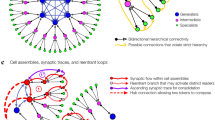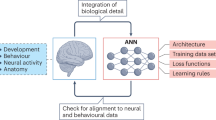Abstract
This contribution is devoted to assess whether a basic hypotheses underlying the connectionist approach is firmly grounded and useful for the research activities concerning the Psychology. The hypothesis asserts that the observed macroscopic consequences of cognitive processing are nothing but collective effects emergent from the interactions between suitable microscopic units. The implementation of the above assertion is based on mathematical models making use of artificial neural networks. In this contribution we investigate whether: (a) these models concretely exhibit emergent collective effects; (b) these collective effects are characterized by the same features which we observe in behaviors produced by human mental processes. Our conclusion is that only particular models of this kind (not including Perceptrons) can give rise to emergent collective effects. Moreover, only the use of specific strategies and techniques of data analysis allows to use the models themselves in a way useful to experimental psychologists. Our contribution discusses the application of our proposals to a specific case study in order to illustrate the nature of the difficulties encountered when dealing with a concrete implementation.
Access this chapter
Tax calculation will be finalised at checkout
Purchases are for personal use only
Similar content being viewed by others
References
Coolen, A. C. C., Kühn R., & Sollich, P. (2005). Theory of neural information processing. Oxford: Oxford University Press.
Goudar, V., & Buonomano, D. V. (2014). Useful dynamic regimes emerge in recurrent networks. Nature Neuroscience, 17, 487–489.
Lancichinetti, A., Fortunato, S., & Kertész, J. (2009). Detecting the overlapping and hierarchical community structure in complex networks. New Journal of Physics, 11, 033015.
Langford, E., Schwertman, N., & Owens, M. (2001), Is the property of being positively correlated transitive? The American Statistician, 55, 322–325.
Mace, C. W. H., & Coolen, A. C. C. (1998). Statistical mechanical analysis of the dynamics of learning in Perceptrons. Statistics and Computing, 8, 55–88.
Ostojic, S. (2014). Two types of asynchronous activity in networks of excitatory and inhibitory spiking neurons. Nature Neuroscience, 17, 594–600.
Rajan, K., Abbott, L. F., & Sompolinsky, H. (2010). Stimulus-dependent suppression of chaos in recurrent neural networks. Physical Review E, 82, 011903, 1–5.
Rojas, R. (1996). Neural networks. A systematic introduction. Berlin/Heidelberg/New York: Springer.
Saad, D. (Ed.). (1998). On-line learning in neural networks. Cambridge: Cambridge University Press.
Sollich, P., & Barber, D. (1997). Online learning from finite training sets. Europhysics Letters, 38, 477–482.
Van Overwalle, F., & Labiouse, C. (2004). A recurrent connectionist model of person impression formation. Personality and Social Psychology Review, 8, 28–61.
Van Overwalle, F., & Siebler, F. (2005). A connectionist model of attitude formation and change. Personality and Social Psychology Review, 9, 231–274.
Wang, X.-J., & Buzsaki, G. (1996). Gamma oscillation by synaptic inhibition in a hippocampal interneuronal network model. The Journal of Neuroscience, 16, 6402–6413.
Author information
Authors and Affiliations
Editor information
Editors and Affiliations
Rights and permissions
Copyright information
© 2016 Springer International Publishing Switzerland
About this chapter
Cite this chapter
Penna, M.P., Hitchcott, P.K., Fastame, M.C., Pessa, E. (2016). Emergence in Neural Network Models of Cognitive Processing. In: Minati, G., Abram, M., Pessa, E. (eds) Towards a Post-Bertalanffy Systemics. Contemporary Systems Thinking. Springer, Cham. https://doi.org/10.1007/978-3-319-24391-7_11
Download citation
DOI: https://doi.org/10.1007/978-3-319-24391-7_11
Published:
Publisher Name: Springer, Cham
Print ISBN: 978-3-319-24389-4
Online ISBN: 978-3-319-24391-7
eBook Packages: Business and ManagementBusiness and Management (R0)




